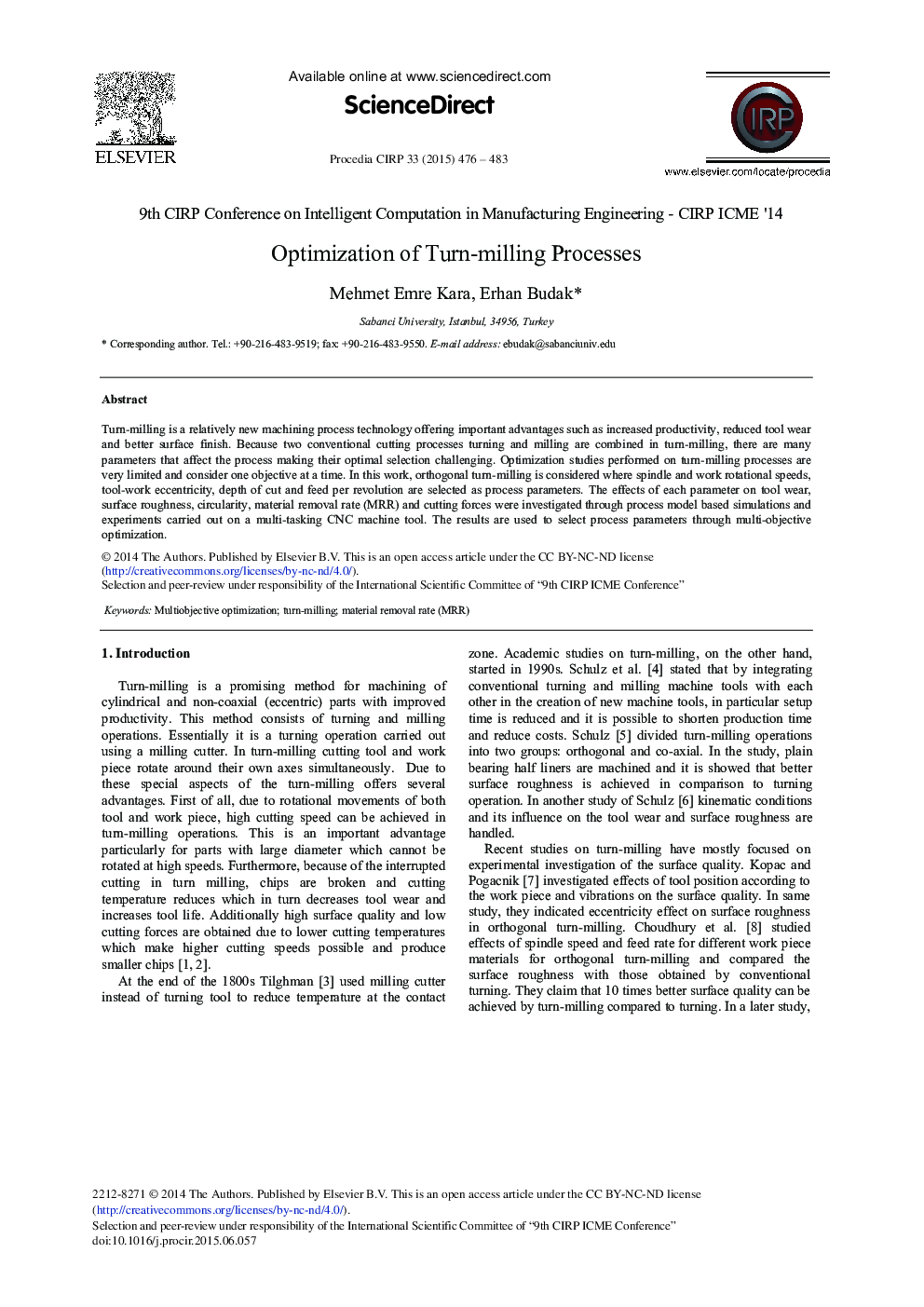| Article ID | Journal | Published Year | Pages | File Type |
|---|---|---|---|---|
| 1699362 | Procedia CIRP | 2015 | 8 Pages |
Turn-milling is a relatively new machining process technology offering important advantages such as increased productivity, reduced tool wear and better surface finish. Because two conventional cutting processes turning and milling are combined in turn-milling, there are many parameters that affect the process making their optimal selection challenging. Optimization studies performed on turn-milling processes are very limited and consider one objective at a time. In this work, orthogonal turn-milling is considered where spindle and work rotational speeds, tool-work eccentricity, depth of cut and feed per revolution are selected as process parameters. The effects of each parameter on tool wear, surface roughness, circularity, material removal rate (MRR) and cutting forces were investigated through process model based simulations and experiments carried out on a multi-tasking CNC machine tool. The results are used to select process parameters through multi-objective optimization.
